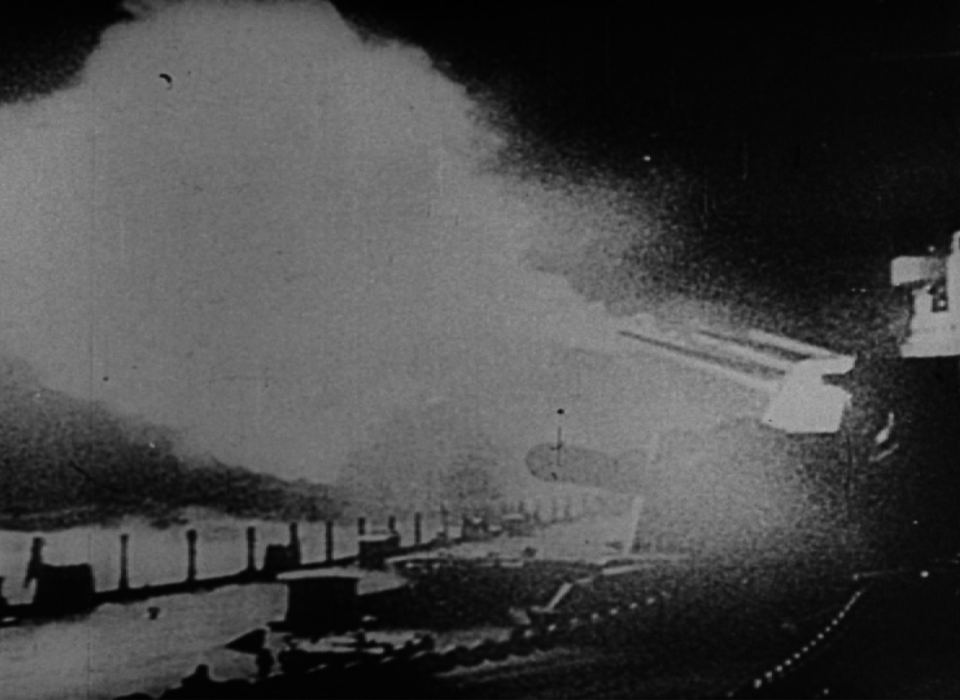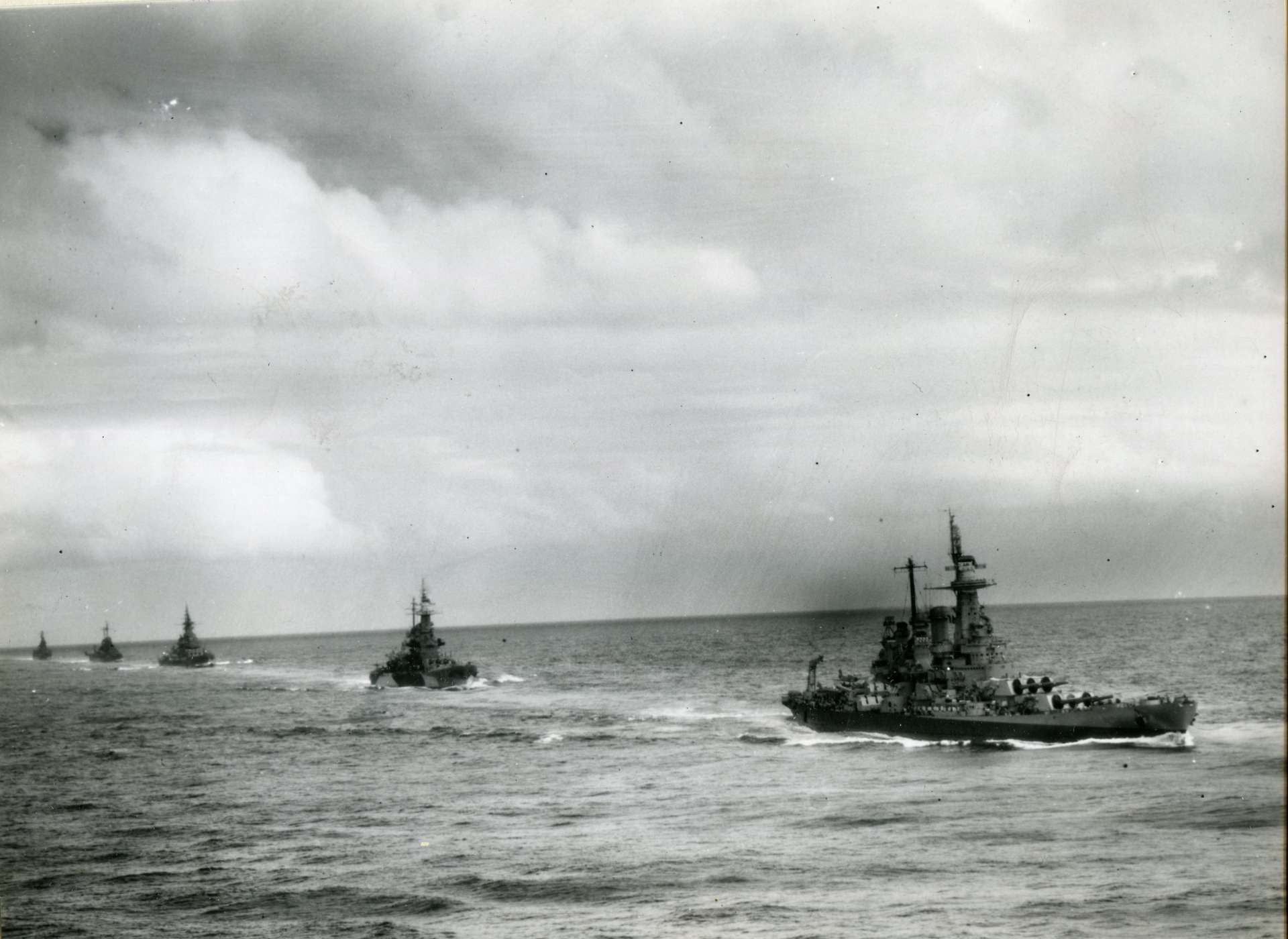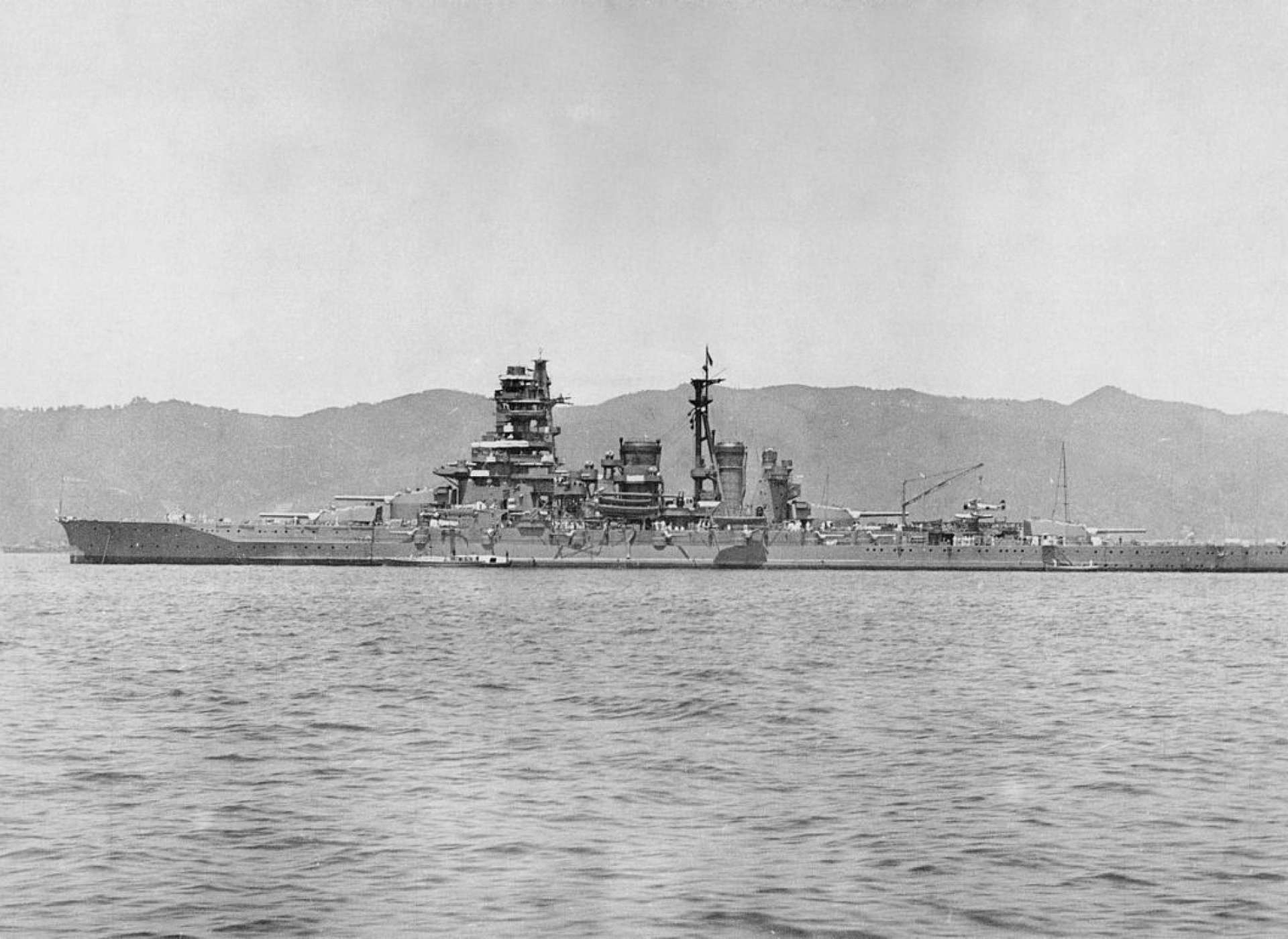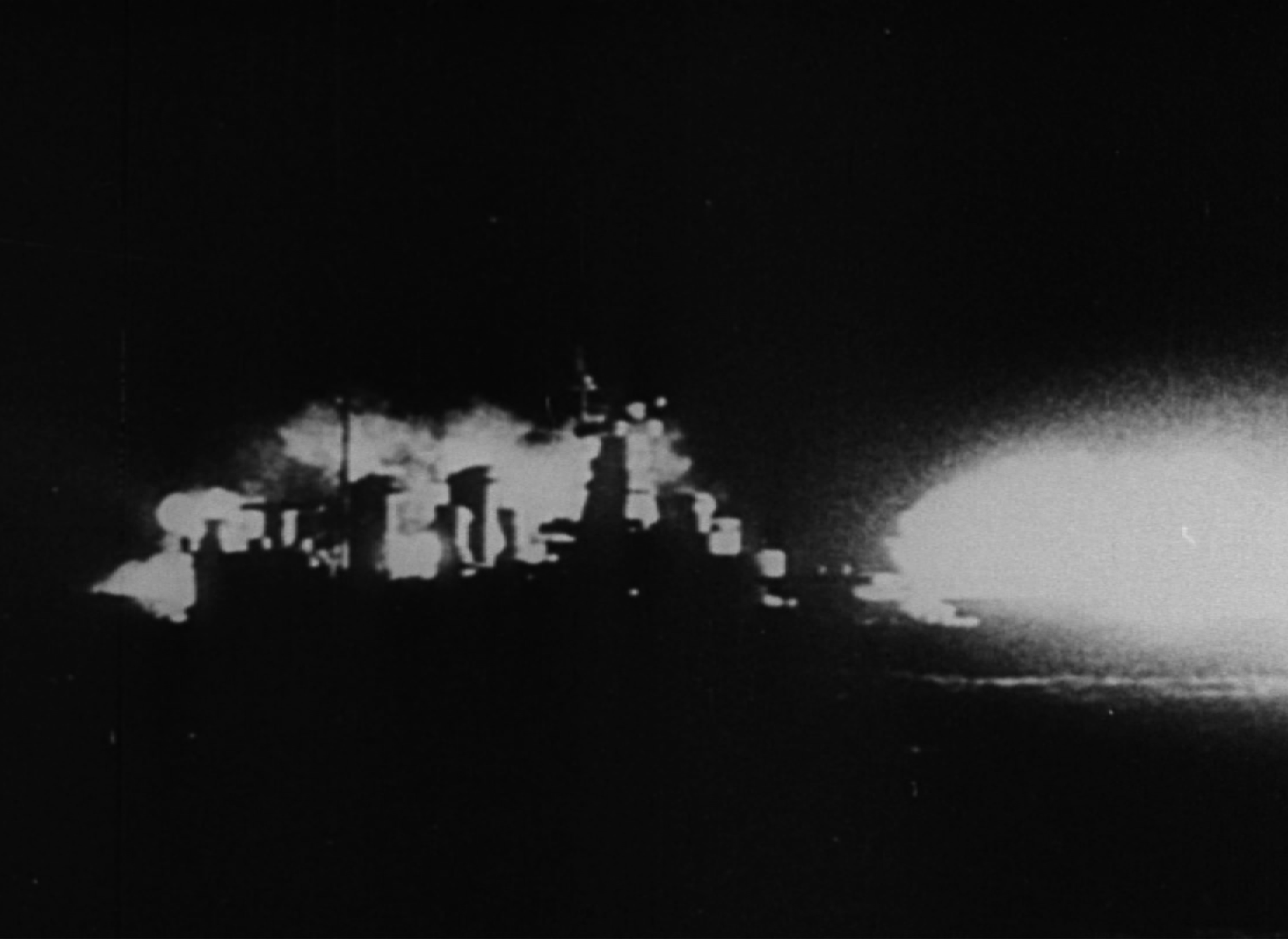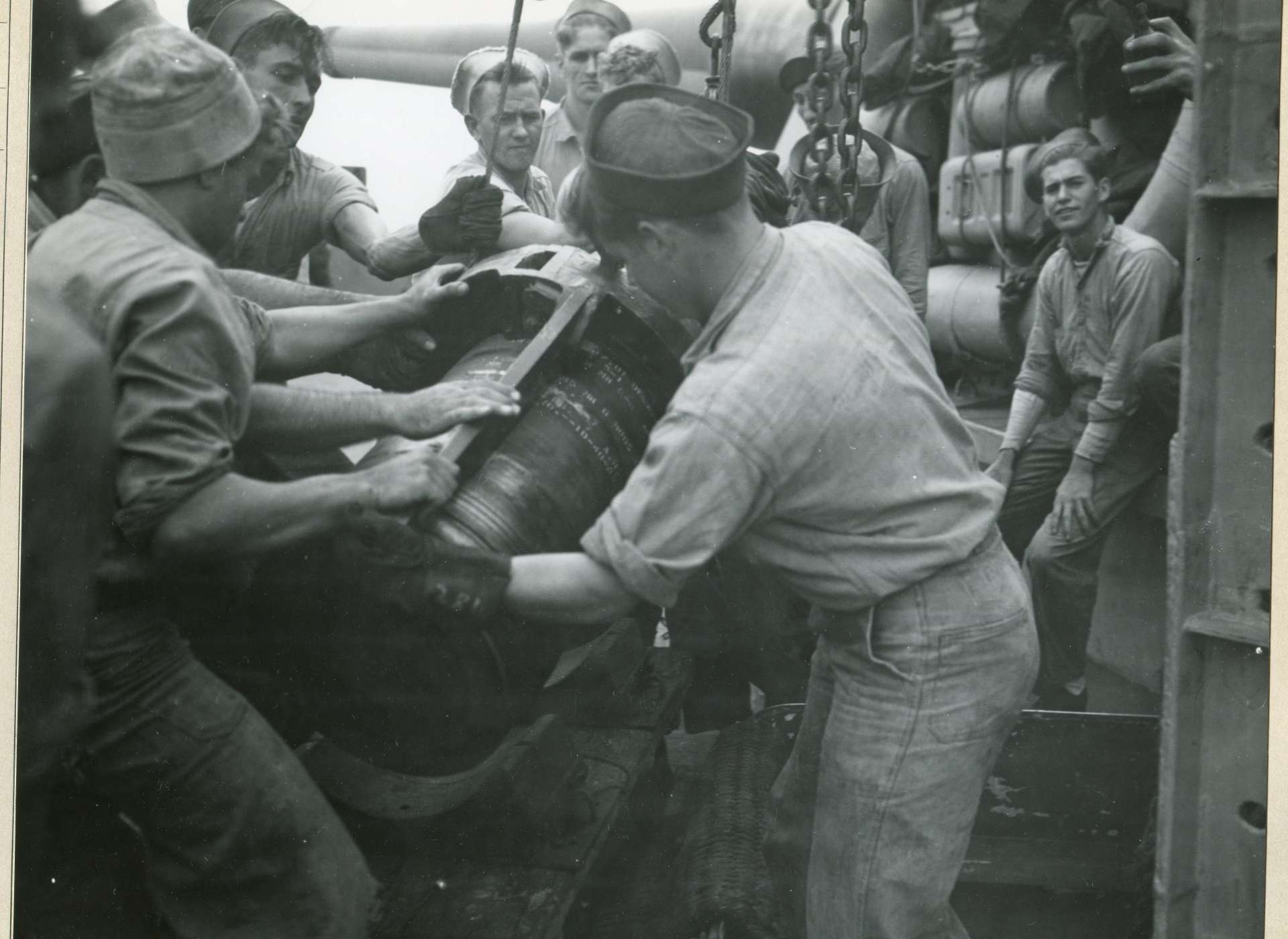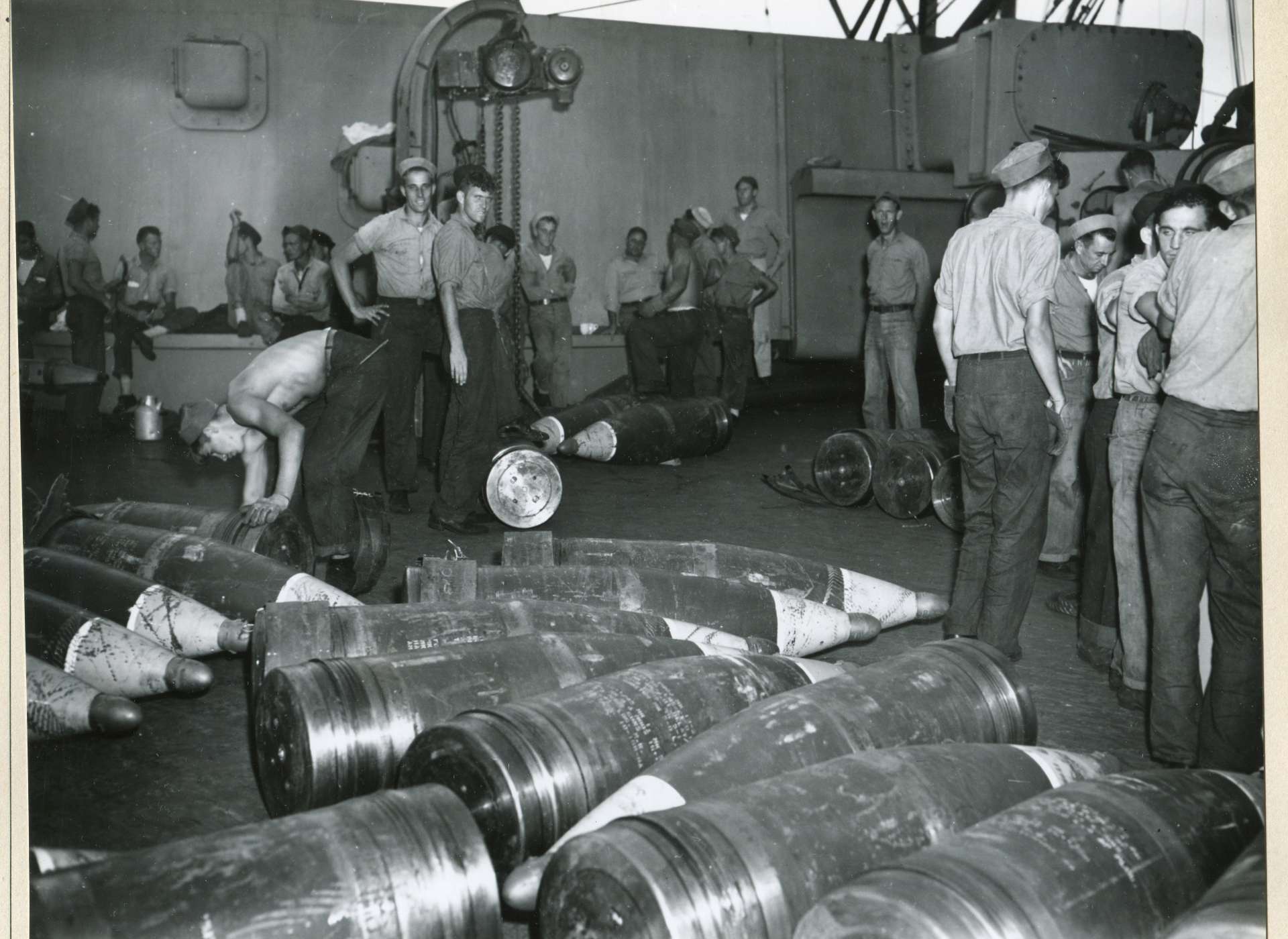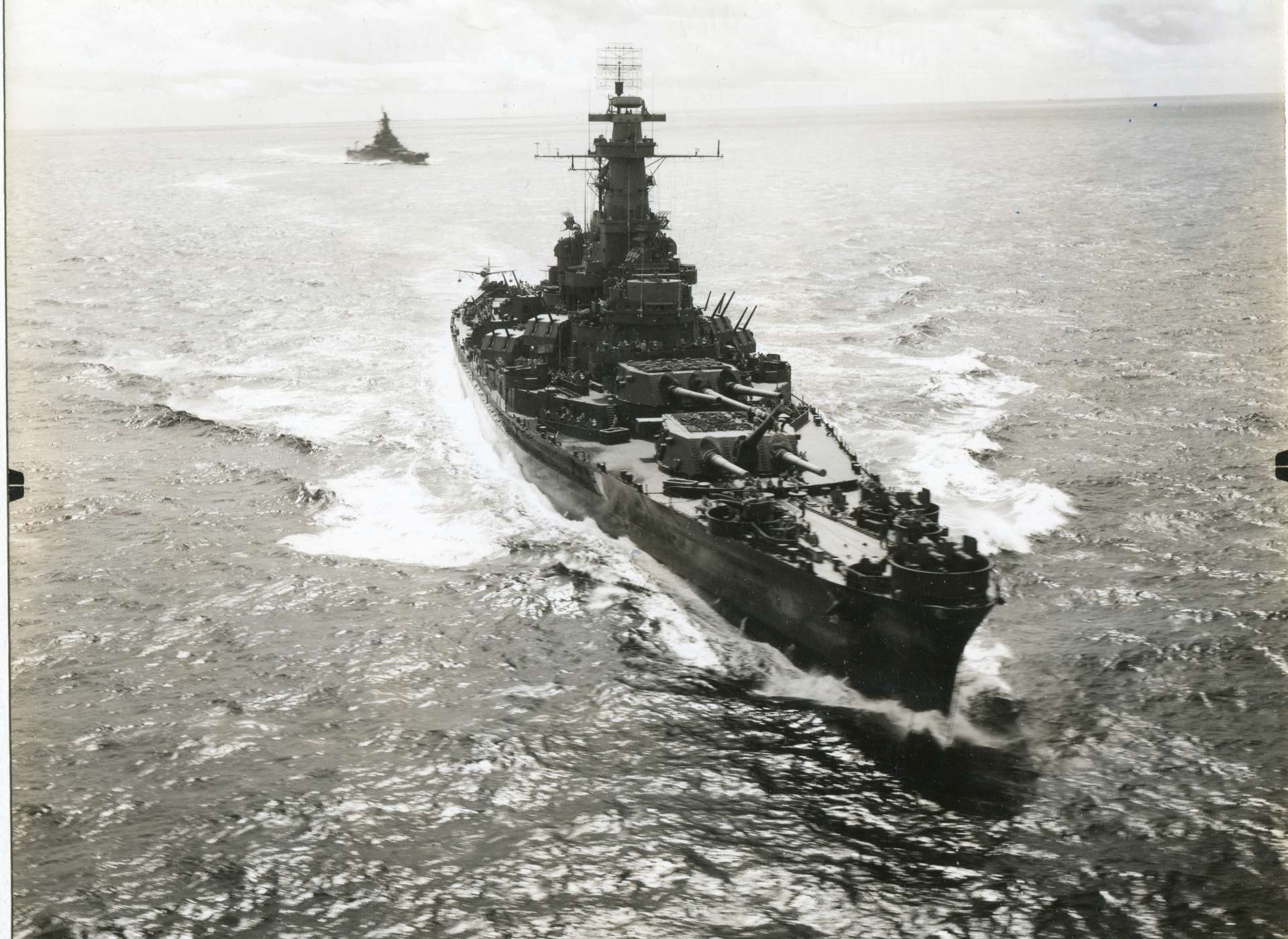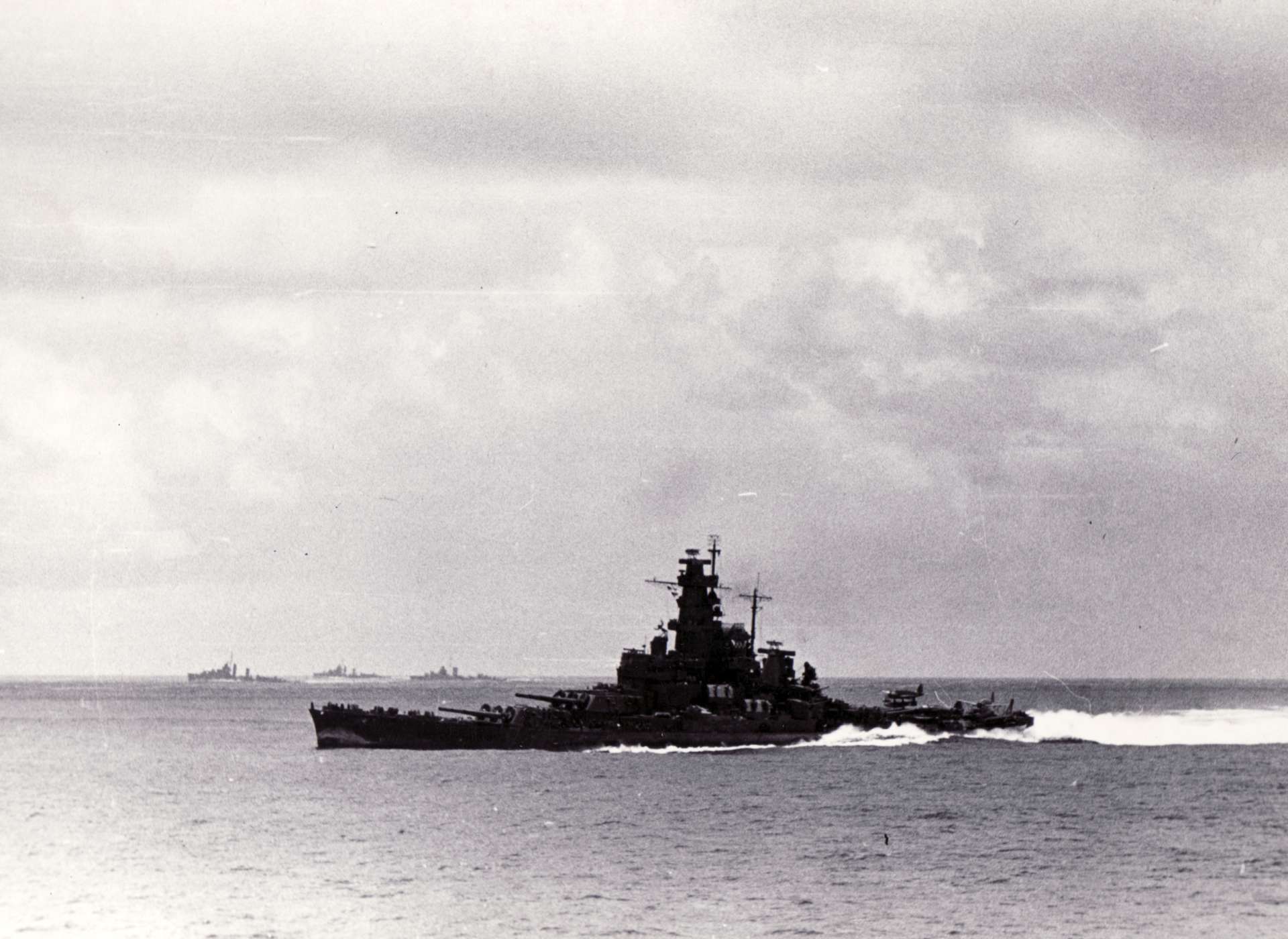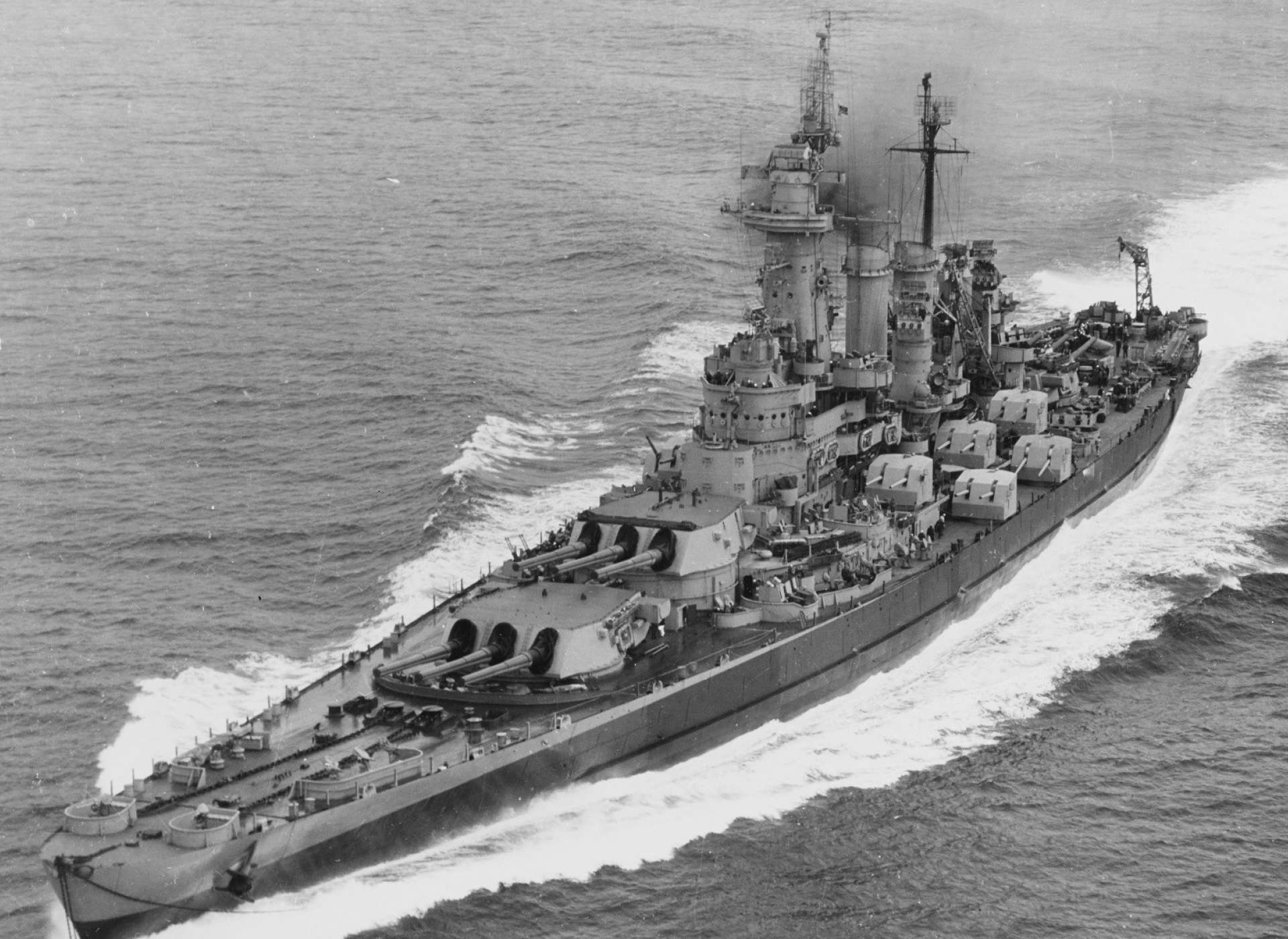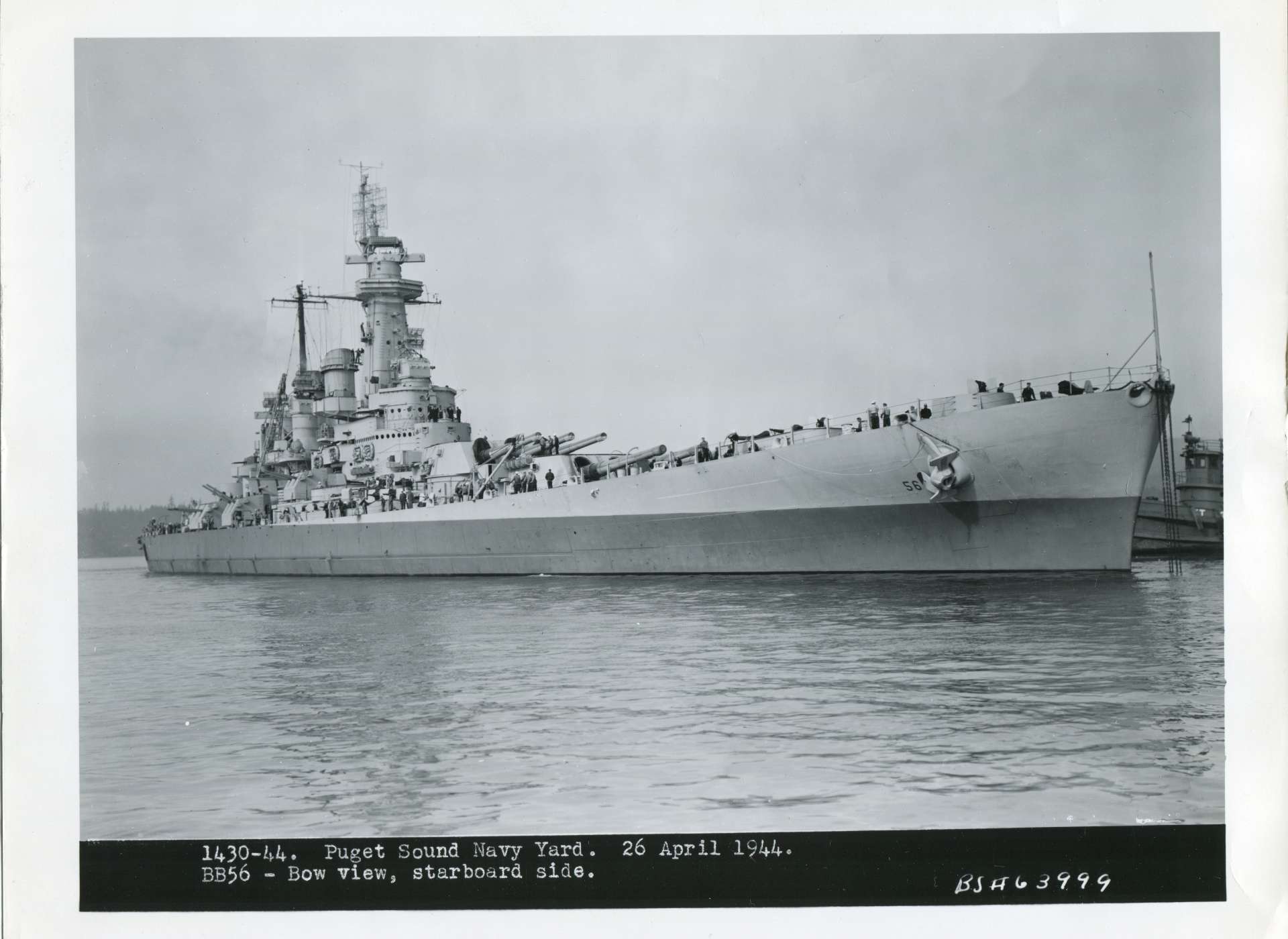Burning ships and bodies littered the field of battle off the shores of Guadalcanal at dawn on November 13, 1942. The previous night, American and Japanese ships had clashed in arguably the most unorganized and chaotic naval battle of World War II. A superior Japanese force had run smack into a smaller, outnumbered American force. Despite many errors, the Americans gave a good accounting of themselves, forcing the Japanese to abandon their mission of attacking Henderson Field. Aircraft launching from Henderson Field attacked the retreating Japanese and sunk the disabled battleship Hiei later on the 13th, completing the American strategic victory.
Thanks to US Naval cryptanalysts reading the Japanese force’s mail, Admiral William Halsey was fully aware that the enemy was not finished with its attempts to batter Henderson Field from the sea and reinforce Guadalcanal’s starving Japanese garrison. Halsey knew the Japanese had already sortied another force south. This force, much like the one sent the previous night, outnumbered anything the US Navy could respond with. The Japanese sent another battleship, the Kirishima, accompanied by four cruisers and nine destroyers, to shell Henderson in preparation for another reinforcement landing that would occur later that night into early the next morning. Halsey surveyed what he had available for defense and was dismayed at what he saw. The majority of his cruisers were either already committed to battle or heavily damaged. His fleet of destroyers was shrinking, and sinking, rapidly. The only real effective power that Halsey had to fight in a surface action were two warships at sea, cruising as screening ships for the battered carrier Enterprise.
Naval warfare went through a massive evolution during World War II. Prior to the attack on Pearl Harbor, the battleship was the queen of the sea. With her massive main battery, she was the striking power of a nation’s navy. The number of battleships put to sea by a navy was how their strength in world affairs was judged. After Pearl Harbor, everything changed. The aircraft carrier, and to some lesser respects the submarine, became a navy’s striking power, especially the US Navy. In 1942, the battleship was seen as a screening ship. Heavily armed with a vast array of anti-aircraft weapons, the battlewagons could throw up an impressive amount of lead to deter Japanese aerial attacks against their aircraft carriers. Battleships had become secondary ships. However, in November 1942, deprived of cruisers and destroyers and possessing only one workable and damaged aircraft carrier, Halsey was forced to respond to the Japanese threat of November 14 with the only thing he had left in his arsenal—his two battleships. The new battleship Washington (BB-56) and the newer South Dakota (BB-57) detached from screening the “Big E,” signaled an acknowledgement of orders, and turned due north, plowing through the wide-open waters off Noumea for the close confines of Ironbottom Sound.
-

A line of battleships, including the Washington, North Carolina, and South Dakota.
-

The Japanese battleship Kirishima.
-

North Carolina-class battleship fires her main battery at night.
-

Sailors load 16-inch shells aboard a battleship.
-

Sailors stand around 16-inch projectiles aboard an American battleship
-

The South Dakota followed by the Alabama in 1945.
-

The South Dakota during the Battle of Santa Cruz.
-

The Washington maneuvers at high speed.
-

The Washington.
Perched in the bridge of the Washington, Admiral Willis “Ching” Lee chatted over the coming events with Washington’s captain, Glenn Davis. Lee knew the action, if it occurred, would be fought at night. As such, he would have to rely on Washington’s radar ability to detect the enemy. A student of radar and a firm believer in its abilities, Lee was confident he and his ships could see and fire on their enemy long before the Japanese did the same to him. Supremely confident, Lee was sure his small but extremely powerful task force of two battleships could destroy any enemy they encountered.
At around 2230 hours on November 14, the SG radar system aboard the Washington indicated targets north-northwest making 21 knots in two columns at a range of 18,000 yards. As the information was relayed to Lee on the bridge, he took a drag from a cigarette, looked over his shoulder to Captain Glenn Davis, and casually said, “Well, stand by Glenn, here they come.” Word was passed to load Washington’s main battery of 16-inch guns. Deep in the bowels of the ship, men jumped to their feet and began the process of loading the great weapons. The men moved with ease and speed as they hustled the 100-pound powder bags into the breech after the 2,700-pound shells had been loaded. The process normally took 30 seconds; Washington’s well-trained gun crews did it in 15. The three massive turrets aboard Washington and South Dakota each trained to starboard and waited for the order to open fire.
At 2313 hours, the waiting ended. When the enemy was visually sighted from the Washington at a range of 11,000 yards, Admiral Lee called South Dakota’s Captain Gatch over the radio and gave him permission to fire. Lee put the radio down, turned to his talker and ordered, “Open fire when ready.”
An instant later, nine 2,700-pound armor piercing projectiles left the 60-foot barrels of Washington’s main battery and screamed towards the Japanese heavy cruiser Sendai. Barely two seconds later, South Dakota followed suit. The Japanese, aware of the presence of American ships but unaware of the presence of American battleships, panicked at the sight of 900-foot geysers of water sprouting around their ships. After opening fire, South Dakota’s radio snoopers picked up “Japanese voices excited and very numerous.” The heavy cruiser Sendai and her escorts turned tail and beat a hasty retreat, putting as much distance between them and the American giants as possible.
Back aboard Washington, Admiral Lee watched as his destroyers tangled with Japanese destroyers and were summarily pounded. In minutes, the battleship’s four escorts were out of the fight, thus leaving the two battlewagons alone to slug it out with the Japanese. Lee looked on as Washington and “SoDak” passed through the debris field left by the destroyers. One of the destroyer sailors bobbing in the water was heard to holler, “Get after ’em Washington!” as the massive ship steamed by at a speed of 26 knots.
Shortly after the destroyer debacle, Lee lost contact with Gatch aboard South Dakota. Electrical failures caused the new battleship to lose power and steam onward in complete darkness. Power was restored, lost again, and restored again throughout the rest of the fight. While South Dakota would give her share of punishment, she would receive a great deal in return as well. Sailing blind, the battleship was lit up by Japanese searchlights, and heavy fire poured into her, setting her upperworks ablaze. The Japanese battleship Kirishima opened fire. South Dakota reeled under the intense fire, swung out of line, and returned fire with her main battery, hitting both Japanese cruisers that were setting her afire. Having suffered over 26 hits, one of which was a 14-inch battleship shell, SoDak retired from the fight.
Washington and Willis Lee were now alone.
Undeterred, Lee watched as Washington’s radar tracked a large target off her starboard beam. Aware that the target she was tracking might be the blacked-out South Dakota, Lee ordered “check fire” on the target. As Kirishima illuminated South Dakota with her searchlight, the target’s identity was confirmed as hostile. At a range of 8,400 yards—point-blank for 16-inch naval rifles, Washington’s main battery roared as she flung 2,700-pound armor-piercing shells at the Kirishima. The first salvo missed, straddling the target, but Washington’s gun crews had their weapons ready to fire less than half a minute later. A second salvo roared from the great guns and scored a direct hit on the Japanese battleship’s superstructrure, obliterating her third-level bridge and everyone in it. Washington’s third salvo was deadly accurate. Five of Washington’s shells struck Kirishima amidships, with one shell penetrating below her waterline, causing massive flooding. The five amidships hits blew open bulkheads, penetrated well inside the ship, and exploded in close proximity to Kirishima’s secondary battery-ammunition magazine, causing ship-threatening fires and leaving 30-foot holes in the deck near the casemates. The shell strike below the waterline caused water to cascade across the breadth of the Kirishima from starboard to port. Yet another shell from the same salvo struck below the waterline further aft, causing flooding. Heavily battered but not dead, Kirishima returned fire at her tormentor, her 14-inch shells passing close by Washington’s superstructure but missing their mark.
As the distance closed, Washington’s secondary five-inch gun battery opened fire, raining shell after shell into Kirishima’s superstructure and causing untold loss of life and damage. Through the melee of noise, smoke, and fire, Admiral Lee said, “If you can see anything to shoot at, go ahead.” The leviathan’s 16-inch guns opened up again, striking Kirishima at a range of 7,850 yards. Two shells struck the forward 14-inch turret of Kirishima at the same time, destroying the weapon. More shells found their mark up forward as even more shells struck farther aft, the coup de grace a 16-inch shell exploding under Kirishima’s rudder, jamming it 80 degrees to starboard and eliminating all control of the vessel.
Having suffered 20 16-inch shell hits from Washington and an untold number of five-inch hits, Kirishima staggered through the night, slowly sinking, finally capsizing, plunging by the stern and disappearing from sight. Deprived of its main punch, the Japanese task force attempted to track Washington, fired one last salvo of torpedoes in defiance, gave up, came about and withdrew from the scene with all possible haste. Willis Lee found no gain in pursuing the retreating enemy. He ordered a zigzag course and retired from the field of battle having almost singlehandedly pounded the enemy to a bloody pulp.
The American victory in the Second Naval Battle of Guadalcanal effectively ended any hope the Japanese had of wresting control of the island back from the United States. The Japanese transports were attacked in the morning with aircraft from Henderson Field. Troops remaining on the island were hunted down and killed by Marines and soldiers. Never again would the Imperial Navy attempt to deliver a knockout blow to Henderson Field. Never again would the “Tokyo Express” operate with impunity. It took an old-fashioned gunfight between two armored giants to secure the seas around Guadalcanal, now—finally—American owned.
The Guadalcanal campaign officially ended on February 9, 1943, a little over six months after it began. The Americans entered the campaign on a shoestring, barely able to fend off incessant enemy attacks on all fronts. They emerged victorious, a war-waging powerhouse with new ships steaming over the horizon to replace those lost in the bloody early battles, troopships laden with fresh-faced Marines and soldiers, and a sky full of aircraft with which to carry the war all the way to Japan’s doorstep. What began on the morning of August 7, 1942, would be finished in Tokyo Bay on the decks of the battleship Missouri.
Seth Paridon
Seth Paridon was a staff historian at The National WWII Museum from 2005 to 2020. He began his career conducting oral histories and research for HBO’s miniseries The Pacific and holds the distinction of being the first historian hired by the Museum’s Research Department. In the 12 years he was Manager of Research Services, Seth and his team increased the oral history collection from 25 to nearly 5,000 oral histories.
Cite this article:
MLA Citation:
APA Citation:
Chicago Style Citation:
